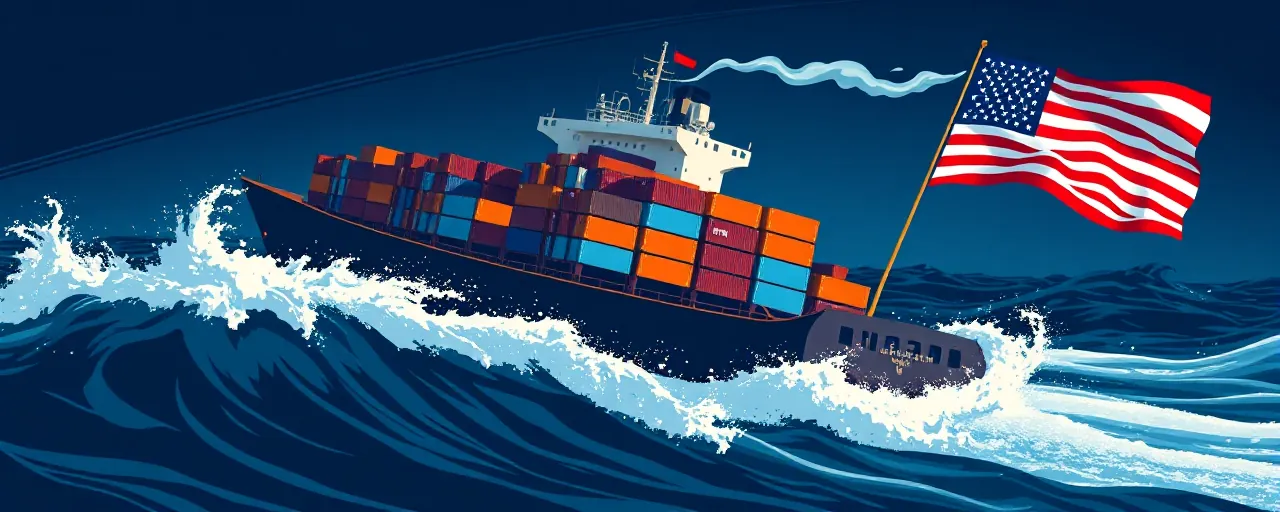A Maritime Wake-Up Call
America’s shipyards, once the envy of the world, have been gathering rust while China’s cranes tower over global ports. On April 9, 2025, President Trump signed an executive order that’s nothing short of a battle cry to reclaim our maritime might. This isn’t just about boats; it’s about jobs, security, and sticking it to Beijing’s relentless economic takeover. For too long, we’ve watched China churn out over half the world’s merchant vessels, leaving U.S. shipbuilding in the dust. Trump’s plan hits back hard, promising to rebuild an industry that’s been neglected by decades of weak-kneed trade policies.
The stakes couldn’t be higher. A strong maritime backbone means more than just economic muscle; it’s a lifeline for national defense. With China’s state-backed shipbuilders flooding the market and Russia flexing in the Arctic, America’s reliance on foreign fleets has become a glaring vulnerability. Trump’s order lays out a clear vision: secure our supply chains, boost our workforce, and make American ships competitive again. It’s a rejection of the globalist fantasy that outsourcing our industrial base was ever a good idea.
Tariffs and Trust Funds: The Economic Arsenal
Here’s where the rubber meets the road. The executive order slaps tariffs on Chinese-made ship-to-shore cranes and cargo equipment, a direct shot at Beijing’s unfair trade practices. These aren’t petty fees; they’re a calculated move to level the playing field after years of China undercutting U.S. builders with subsidies and cheap labor. Couple that with the Maritime Security Trust Fund, a cash engine fueled by duties and fees, and you’ve got a recipe for real investment. We’re talking $250 million a year for ship construction and $100 million for small shipyards through 2034, no longer at the mercy of Congress’s budget whims.
Contrast that with the Biden era’s limp response: endless talks with no teeth. Trump’s team isn’t messing around; they’re also tightening the screws on foreign cargo sneaking through Canada and Mexico, tacking on a 10% service fee to fund our Customs and Border Protection. Critics whine about trade wars, but they miss the point. This isn’t escalation; it’s survival. China’s shipbuilding dominance jumped from 5% in 1999 to over 50% today, while America’s withered. The trust fund and tariffs are a lifeline to reverse that slide.
Zones of Prosperity, Not Pipe Dreams
Trump’s Maritime Prosperity Zones are a stroke of genius, turning waterfront ghost towns into hubs of opportunity. These aren’t handouts; they’re tax breaks and regulatory relief designed to lure private investment into shipbuilding and logistics. Think Great Lakes and river towns, not just coastal elites, getting a piece of the action. Historical efforts like the Merchant Marine Act of 1936 laid the groundwork, but this takes it further, blending economic growth with real-world impact. Jobs will flow, and local economies will thrive, all while sticking to the principle that government’s job is to unleash private enterprise, not smother it.
Doubters claim it’s just another tax gimmick, but they’re dead wrong. Look at Opportunity Zones; they sparked billions in investment. Maritime Prosperity Zones build on that success, targeting an industry critical to our security. The SHIPS for America Act backs this up with hard numbers: 25% tax credits for shipyard upgrades and a revolving loan fund to keep the cash flowing. This is about empowering American workers and businesses, not coddling foreign competitors.
Allies in the Fight, Not Freeloaders
Trump’s not going it alone. He’s roping in allies to align trade policies and counter China’s chokehold on maritime logistics. Within 90 days, the U.S. Trade Representative will rally treaty partners to mirror our tariffs and fees. It’s a page from history’s playbook, like when naval alliances secured trade routes in the 19th century. Today, it’s about ensuring Arctic waterways and global shipping lanes don’t fall to adversaries. The order even sweetens the deal for allied shipbuilders, offering incentives to invest here and bolster our capacity.
Some argue we’re alienating trading partners, but that’s nonsense. This is leadership, not isolation. China’s predatory practices have gone unchecked too long, and allies see the threat. Reserving 10% of U.S.-bound Chinese exports for American-flagged ships isn’t bullying; it’s a wake-up call to nations who’ve grown comfy relying on our market while ignoring Beijing’s moves. Strength breeds respect, and Trump’s proving it.
The Verdict Is In
This executive order is a game-changer, plain and simple. It’s a full-throated commitment to American workers, shipyards, and security, backed by smart policy and real money. The Maritime Action Plan isn’t some dusty report; it’s a roadmap to outbuild and outmaneuver China, with clear metrics for taxpayer returns. From modernizing the Merchant Marine Academy to cutting red tape in procurement, every piece fits a bigger puzzle: making America the maritime powerhouse it once was.
The naysayers will cry about costs or global backlash, but they’re missing the forest for the trees. Decades of inaction got us here, dependent on foreign ships while our industrial base crumbled. Trump’s order flips the script, proving that bold leadership can turn the tide. America’s maritime comeback isn’t just possible; it’s underway. And it’s about time.
